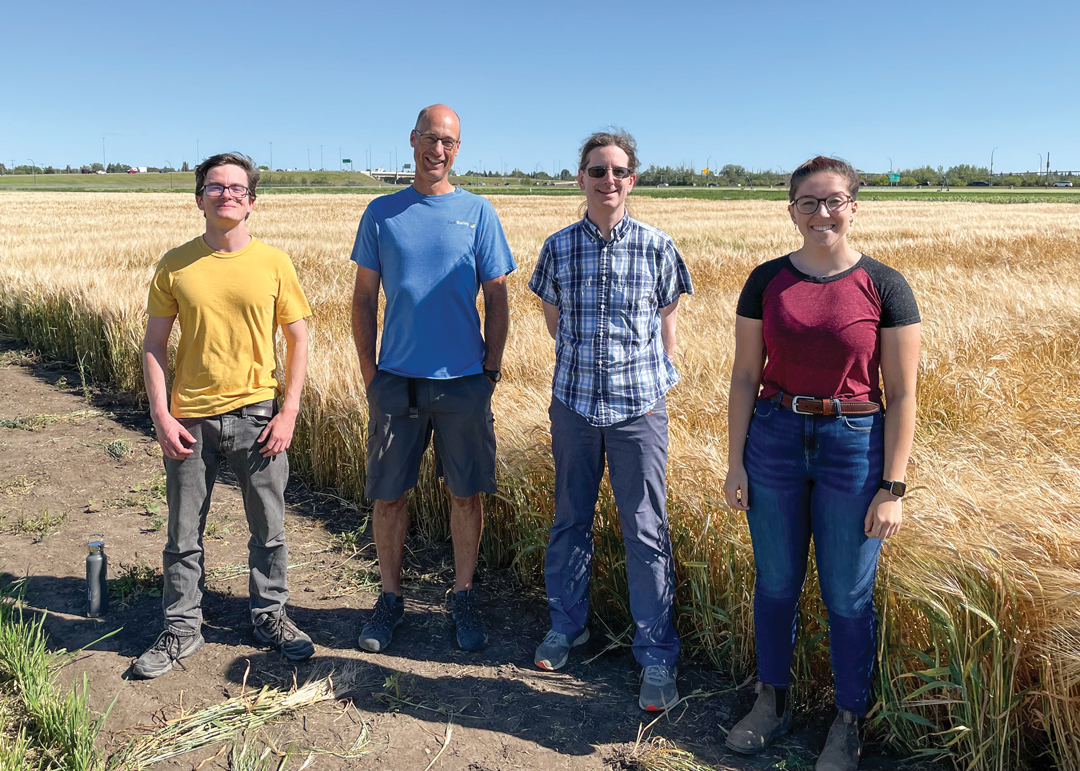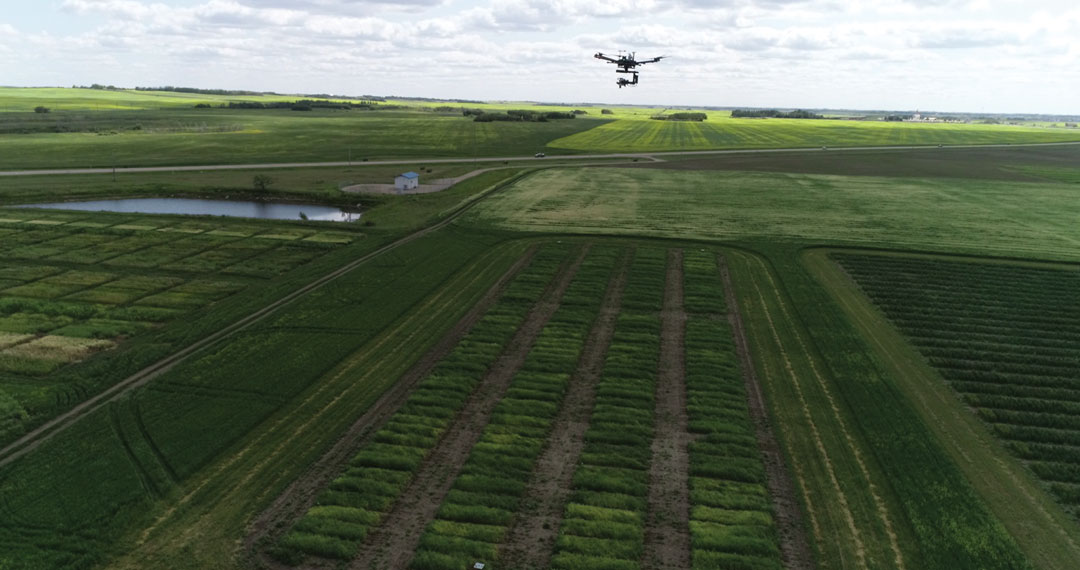ROOTS OF RESISTANCE
BY JEANINE MOYER • PHOTO COURTESY OF THE CROP DEVELOPMENT CENTRE
Researchers at the University of Saskatchewan have gone underground, and underwater, to uncover the root cause of lodging in barley. Using a new approach, the Crop Development Centre’s Aaron Beattie and the National Research Council of Canada’s Allan Feurtado employed hydroponics to identify root traits that improve lodging resistance.
Lodging is more common in barley than other cereals grown in Western Canada. It can decrease yield and grain quality and increase disease load and fuel consumption at harvest. The financial impact can be significant.
“There was a significant gap in understanding how root systems relate to plant standability,” said Beattie. Between 2020 and 2024, the researchers studied the variation in root structure of 160 barley genotypes. “This is the first time varieties adapted to Western Canada were utilized and it was also the first time we were able to measure and compare barley root systems in the field with root systems grown indoors using hydroponics,” he added.
THE ROOT CONNECTION
Ultimately, Beattie and Fuertado hope to develop genetic markers to help breeders produce barley varieties with improved standability and productivity. “Through this project, we’ve discovered new ways to assess traits connected to barley lodging,” said Feurtado. Their novel use of hydroponics made this possible. “We’ve found a new method to screen for lodging resistance by measuring early seminal root angles from the germinating grain. These angles are consistent with the angles of later crown roots that contribute to anchorage strength and overall lodging resistance.”
The process also led to a breakthrough in the assessment of root system solidity, a measure of the compactness of a root system. Because root anchorage is so important for plant stability, said Feurtado, lower root solidity should create a higher likelihood of lodging resistance. As well, a more “exploratory,” less-compact root system that occupies greater space can potentially grab more topsoil and increase anchorage strength. “This is the first study to connect root solidity to lodging, and it’s the ability to conduct this research indoors that really opened up this new discovery for us,”
said Feurtado.
Valuable knowledge for barley breeding programs, the project determined traits such as root crown width, seminal root angles and root strength are highly heritable or largely controlled by genetics. This implies breeding programs can develop lodging resistant western Canadian varieties. The study’s results also suggest the root systems of other cereal crops may play a part in lodging resistance.
NEXT STEPS
In the next phase of the project, Beattie’s breeding program will incorporate the barley varieties and genotypes known to have desirably wide root angles. The goal is to produce new lodging resistant varieties.
This root research will also help to develop models with the use of AI and machine learning that will predict lodging resistance. The data will make it easier to identify whether a variety will be resistant or susceptible to lodging. “Our next steps are to identify and confirm genetic markers related to root traits and lodging resistance and speed up the germplasm development, or breeding process, to support western Canadian growers,” said Feurtado.
Funding for the study was provided by the Agriculture Development Fund of Saskatchewan, Alberta Grains, Saskatchewan Cattlemen’s Association, SaskBarley and the Western Grains Research Foundation.







Comments